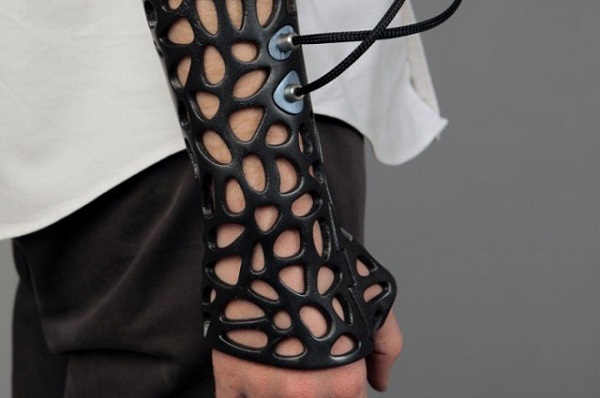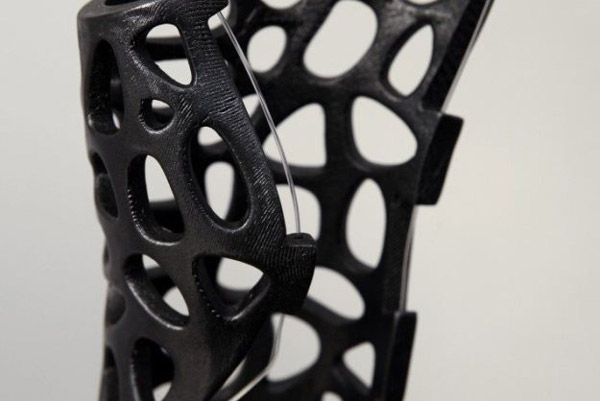Using the form follows function principle, designer Deniz Karasahin created a new type of 3D printed casts that employ ultrasounds to speed bone regrowth.
3D printed casts are made to measure, a fact that ensures a high degree of comfort. Besides that, the polymers used for printing it are very lightweight, which is yet another aspect that makes these casts very comfortable to wear. Studies conducted both on animals and on humans demonstrated that low-intensity pulsed ultrasound stimulation (LIPUS) can speed up bone regrowth dramatically, so Turkish industrial designer Deniz Karasahin decided to combine this technology with 3D printing to bring the world the best orthopedic cast yet.

Osteoid, the custom-fitted, 3D printed medical cast created by Deniz Karasahin comes with a LIPUS bone stimulator system that attaches to it. Ultrasound pulses increase the incorporation of calcium ions in cultures of cartilage and bone cells, so the principle used by this system is not overly complex. Obviously, this solution is non-invasive, so people wearing it shouldn’t have any concerns.
Still, LIPUS hasn’t been adopted at a large scale simply because its effectiveness varied greatly. In most cases, however, it is able to speed up the healing rate by 80%, while reducing the healing process by 38%, all with 20 minutes of use every day. The LIPUS pulse generator is equipped with a color switching LED that gives hints on whether the bone stimulator is working or not.

Making a 3D printed cast is not as easy as it seems, hence the low adoption rate. First, the patient’s broken limb is analyzed using a 3D body scanner. Next, the data is transferred to a computer running modeling software that ensures that the cast has plenty of ventilation holes, as well as a locking mechanism that holds the two parts of the Osteoid together.
Last year, after I managed somehow to sprain a metatarsal bone in my right foot, I had to wear for a week a plaster cast. While it maintained my foot in a fixed position, to some degree, the cast was quite heavy, uncomfortable, and it didn’t allow the skin to make contact with the air. Had it been a 3D printed cast, I wouldn’t have had any of these problems, but this technology has yet to become mainstream.
Be social! Follow Walyou on Facebook and Twitter, and read more related stories about the Final Fantasy VII 3D printed polygon figures and the 3D printed Iron Man helmet.










